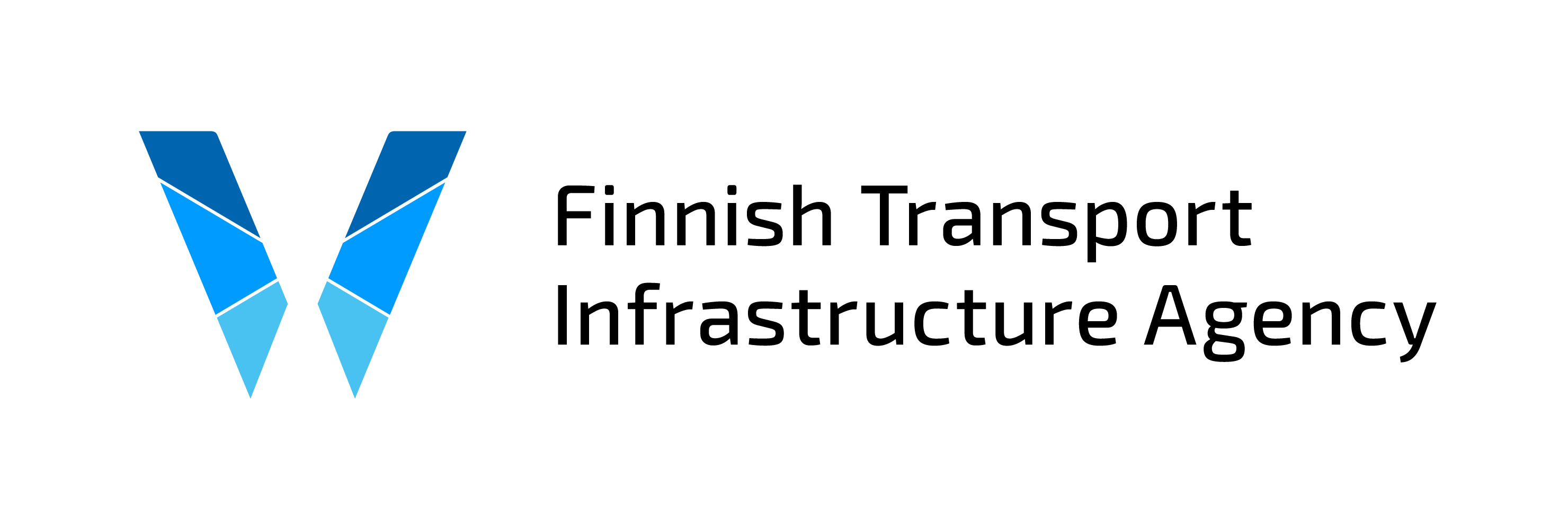Climate change
Climate change is one of the most challenging global environmental problems. It is caused primarily by the increase in the amount of greenhouse gases in the atmosphere. The future trajectory of climate change depends on future levels of greenhouse gas emissions and the development of carbon sinks. The most significant greenhouse gas is carbon dioxide, which forms as the final product of the complete combustion of fuel. In addition to carbon dioxide, different types of transport also generate other greenhouse gases.
Reducing greenhouse gas emissions from transport is a significant part of climate change mitigation, as in Finland transport accounts for about one fifth of these emissions. More than 90% of transport-related greenhouse gas emissions are generated by road vehicles. There is, unfortunately, no simple and easy solution for eliminating transport-related greenhouse gas emissions.
According to the final report of the Transport Climate Policy Working Group, strategies for reducing greenhouse gas emissions from transport can be divided into three general categories (publications of the Ministry of Transport and Communications 13/2018):
1. Reducing emissions-producing transport use (kilometres) and improving in other ways the energy efficiency of the transport system.
2. Switching to low-emission or zero-emission technologies for means of transport (e.g. electric cars).
3. Introducing lower-emission fuels or renewable fuels.
Finland has high greenhouse gas emission reduction targets
According to the EU's emission reduction targets for sectors not subject to emissions trading, Finland’s 2030 target is to reduce its greenhouse gas emissions by 30% compared to 2005 levels. According to the Effort Sharing Decision adopted in April 2018, Finland's national share is to reduce emissions by 39% by 2030. In the Energy and Climate Strategy and the medium-term plan drawn up as part of the Climate Change Act, Finland has set the target of a 50 percent reduction in transport emissions by 2030. The aim of the Government Programme of Sanna Marin has been that Finland will be carbon neutral by 2035 and that the emission reduction obligation for 2030 will be tightened to at least 55% (compared to 1990).
In addition to transport itself, infrastructure management also causes greenhouse gas emissions
In 2010-2012, the Finnish Transport Agency (now the Finnish Transport Infrastructure Agency) examined the carbon footprint of all the traffic and traffic route types that it is responsible for. Transport causes significantly more greenhouse gas emissions than road construction and maintenance. For road infrastructure, CO2 emissions are on average 511 000 tonnes per year, whereas for road transport, CO2 emissions are around 8.3 million tonnes per year. For railways and shipping, the corresponding emission levels are significantly lower.
Infrastructure management affects energy consumption directly through the measures taken, service level changes, impacts on other operators and changes to the transport system. The energy consumption of infrastructure management and transport can be reduced by improving, repairing and managing traffic routes and by improving transport services (FTIA publication 47/2019).
Adaptation to climate change
In addition to reducing greenhouse gas emissions, we need to prepare for and adapt to climate change because, despite emissions reductions, the climate will continue to get warmer in the coming years.
One of the challenges of infrastructure management is to plan the adaptation measures needed for the transport network due to the impacts of climate change. The development work starts with the structural and technical preparedness of the transport network. This involves examining the functional limits, resilience and vulnerability of existing structures and technical systems.
Climate change is having a particularly large impact on the conditions of the route network during winter. Winter maintenance is becoming increasingly difficult and expensive due to the increased stretches of time when the most difficult conditions are seen. In order to ensure the smooth flow and safety of traffic in these conditions, additional investments must be made in winter maintenance. The same applies also to the railways.
The changing ice conditions and increasing winds in the Finnish sea areas is meaning that the assistance conditions for winter navigation are more difficult to predict and are changing more rapidly. For example, the number of pack ice zones and slush zones featuring the most demanding assistance conditions may increase and their locations may change, bringing a need for further development of ice condition forecasting.
